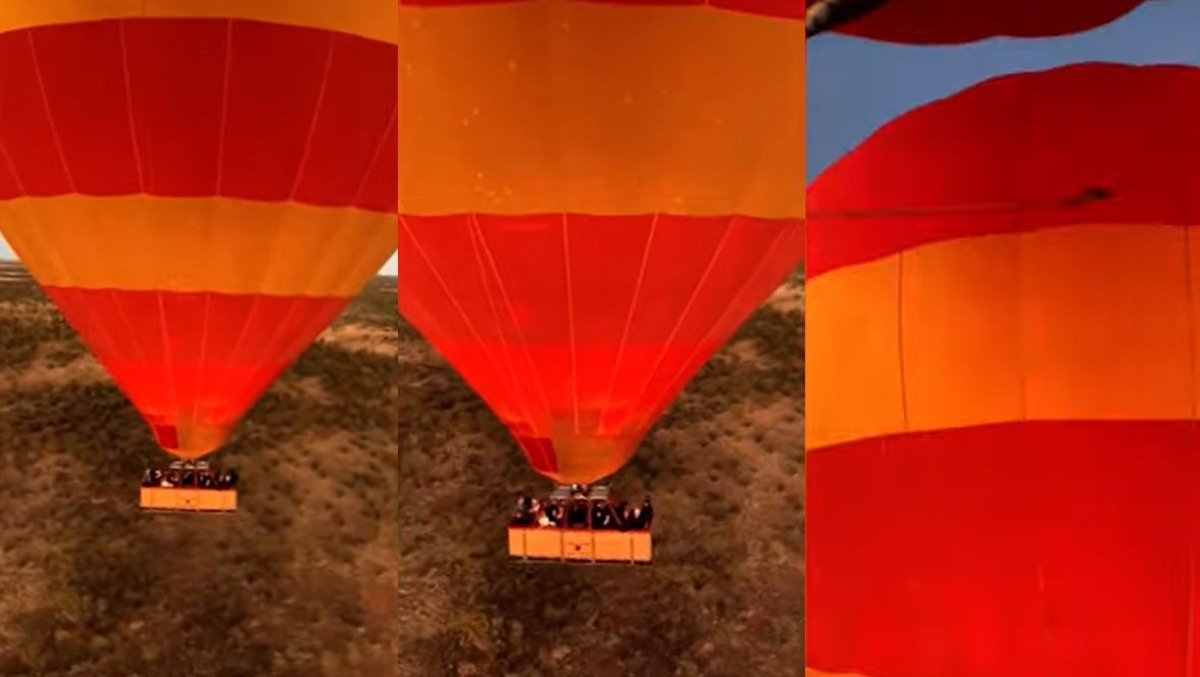
The ATSB has released mobile phone footage showing two large hot air balloons crashing into each other near Alice Springs last year.
The incident, which involved 35 people onboard, resulted in no injuries despite a similar balloon collision in the same area killing 13 in 1989.
[embedded content]
ATSB chief commissioner Angus Mitchell said the latest accident was a result of one pilot misjudging the speed and direction of the second balloon.
“Instead of descending behind it, the smaller balloon tracked towards a collision with the larger one,” said Mitchell.
The full report describes how, on the morning of 18 July 2022, a pair of hot air balloons, operated by Red Centre Ballooning, left a launch site 7 km south-east of Alice Springs Airport, in the Northern Territory.
One balloon carried a pilot and 23 passengers, while the other carried a pilot and 10 passengers.
PROMOTED CONTENT
About 15 minutes after take-off, the smaller balloon was about 800 ft above and 1.1 km behind the larger balloon, when its pilot began to descend towards a lower channel of air, in an attempt to slow down.
A balloon collision at Alice Springs in 1989 resulted in fatal injuries to a pilot and 12 passengers, after the basket of one balloon collided with the envelope of another.
“Fortunately, in this case, the pilot of the smaller balloon recognised a collision was likely, and managed the descent so that a basket-to-envelope collision did not occur,” Mr Mitchell said.
Instead, the balloons’ envelopes collided, and no damage or injuries occurred.
“While the pilots were able to avoid damage during this collision, this incident highlights the importance of evaluating all available options to support good decision making.”
The ATSB’s investigation report directs pilots to review the Civil Aviation Safety Authority (CASA)’s resource booklet, Decision Making.
“You cannot improvise a good decision. You must prepare for it,” Mitchell said.
“You will make a better and timelier final decision if you have considered all options in advance.”
The ATSB’s report also notes this incident highlights the risks of misinterpreting what is seen, and pilots should review CASA’s Advisory Circular 91-14, Pilots’ responsibility for collision avoidance.
“Not only is seeing important, but accurately interpreting what is seen is equally vital,” said Mitchell.
- SEO Powered Content & PR Distribution. Get Amplified Today.
- Platoblockchain. Web3 Metaverse Intelligence. Knowledge Amplified. Access Here.
- Source: https://australianaviation.com.au/2023/02/video-watch-as-hot-air-balloons-collide-in-alice-springs/



